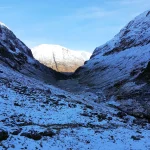It’s well known that ecology is quite seasonally constrained. Certain species are active at times of the year where others are not. What this means is that as ecologists we need to time our surveys as best we can to collect suitable data. Surveying at the wrong time collects poor data and this can cause projects to be rejected by planners.
I thought it might be useful to do a series of blogs looking what what surveys we do and when. Starting of course with January, generally our quietest month for fieldwork. Below you can find some examples of the species surveys we’re able to do during the month of January.
Bat Surveys
Bat surveys aren’t usually associated with January, but there’s still work that can be done. Although night time presence / absence surveys can’t be done this month, the coldest days in January are the best time to do bat hibernation surveys. Bats will use crevices in trees, caves and buildings for winter hibernation roosts. Through checking with endoscopes and clever tricks with mirrors and torches, hibernating bats can be found during January and roosts can be confirmed in this way.
Additionally, bat preliminary roost assessment can be completed year-round and in fact winter is a great time to look at trees. The absence of leaves makes wounds, woodpecker holes, and other batty features really easy to spot in winter.

Bird Surveys
January is part of the optimum season for wintering bird surveys which generally look mostly for migratory species. Many sites in Scotland are important for large numbers of migrating birds from more northerly countries.
For example, these surveys could include whooper swans (Cygnus cygnus) which migrate to the UK from Iceland. One of the closest Special Protection Areas (SPAs) to Glasgow, Black Cart SPA, is designated for its wintering whooper swans and supports up to around 4% of the UK’s wintering population annually. Wintering bird surveys aim to determine the species assemblages present on and around a site in the winter months and January is an optimal month for these surveys.

Great Crested Newts
Another species not often thought of for January surveys. However, so long as it’s not icy, we can still undertake habitat assessments. Great crested newts (Triturus cristatus), like all amphibians in the UK, use ponds to breed. Part of great crested newt surveying is Habitat Suitability Index assessment. This involves looking at ten different components of the pond and surrounding habitat. It’s not really optimal to do it in January, but it can still be done if there’s no ice on the ponds surface and the project really can’t wait.
Otter Surveys
Otter surveys can be completed at any time of the year. However, they’re fairly weather dependent. In winter of course the vegetation will have died back a lot which makes spotting evidence of otter resting places (holts or couches) simpler. Unfortunately however, wintry weather usually means that watercourses flow in spate more often than in summer so evidence of otters like feeding signs, sign heaps, or spraints may be washed away. Additionally, high-flow rates can make access to waterway edges unsafe and surveys might not be able to be completed at all.
Pine Marten and Red Squirrels
Pine marten (Martes martes) and red squirrel (Sciurus vulgaris) surveys can both be done year-round, though in winter months signs may be easier to spot because vegetation has mostly died back and deciduous trees have dropped leaves making it easier to spot dreys or dens. Sightings of animals at baited camera traps is also more likely as harsh winter conditions can make foraging difficult for these species.

Preliminary Ecological Appraisals
January is outwith the optimum season for completing a preliminary ecological appraisal (PEA). This is because, as noted for a few species above the plant species on site will often have died back and be less obvious in the winter months. However, PEA surveys can still be completed in January with the caveat that the vegetation list will be limited and notable species of flora may get missed. This means that there may end up being recommendations for further botany surveys or phase 1 clarification surveys later in the year during the flowering months included within the PEA report.
Reptile Surveys
Reptiles will more or less all be hibernating in January. Though some hardy adder (Vipera berus) may be active, it’s not an appropriate time to attempt reptile surveys. However, habitat quality assessments for reptiles can be assessed year-round though is simpler if there’s no snow on the ground. Features which promote the presence of reptiles, such as log piles, dry stone dykes, and varied habitats are easily identified. These can be identified in January and used to decide the need for further surveys later in the year.

Get in Touch
If you have a site needing any form of ecological appraisal EP Ecology has in-house expertise combined with a network of associates who can deliver your ecology survey needs, check out the services we provide or use the form below to get in touch and we’ll see what we can do for you.
